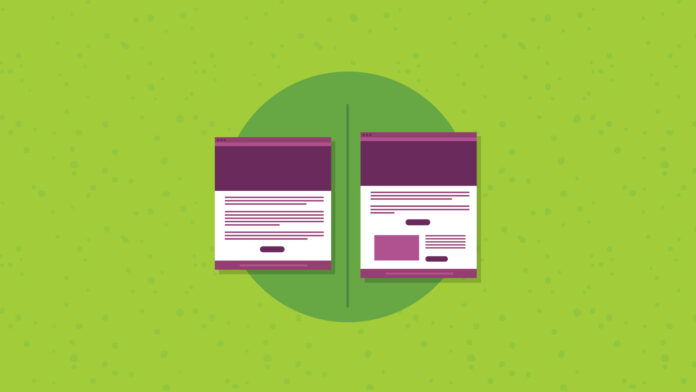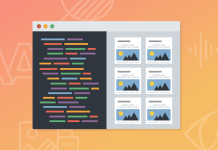Create your very own Auto Publish News/Blog Site and Earn Passive Income in Just 4 Easy Steps
To say your readers have the attention span of a goldfish is a bit of an exaggeration, but studies show that people receive an average of 126 emails per day. With so many messages crowding their inboxes, how much time do your readers actually have to read them? Not much.
If you want to make an impression, you have to act fast. So what is the ideal email length?
We discuss the ideal email length and highlight strategies for different types of emails. Then we share our insights from A/B testing email length to optimize conversions and Response rates.
Why is email length important?
Before we figure out how long an email should be, let's look at why email length is so important. Here are some reasons why:
- Many factors compete for your reader’s attention.
- Readers often skim emails rather than actually reading them.
- Email clients “truncate” emails that are too long or too large.
Let’s look at each of these reasons:
You compete for your reader’s attention
Readers receive an average of 126 business emails per day. They're unlikely to devote much time to each of these messages. In fact, studies show that readers spend about 51 seconds reading individual emails. Short emails with clear calls to action (CTA) are more likely to capture your subscribers' attention than long emails.
Readers don’t really read emails
According to a study by Nielsen Norman Group, email readers don't actually read emails. Based on evidence obtained using eye-tracking software, the study found that readers tend to skim email newsletters. In fact, readers often skip the introduction and only read about 19% of the newsletter content in full. Use this knowledge to structure your email copy to place your content where you know it will be read.
Email clients “cut off” emails that are too long or too large
Size matters. If your email is too long or too large, your subscriber's email client may truncate your email. This means your readers will only see part of your email. To read your entire message, they will have to click a link to open the rest of your email in a web browser. If you haven't piqued their interest in the first part of the email, they are unlikely to follow a link to another page to finish reading your email.
More importantly, long emails can hurt your deliverability. Some spam filters flag long emails as potentially malicious or spam. Use email length best practices to help your emails land in inboxes.
Learn more about message clipping in Gmail.
What is the ideal email length?
Now that we've covered the “why,” let's discuss some email length best practices. With your subscribers' email read rates in mind, here are four areas to focus on when it comes to email length:
- Regarding
- Preheader text
- Email copy
- Call to action
We'll recommend the ideal length and give you some tried and tested methods. Let's go through these points one by one:
What is the ideal length for an email subject line?

An inbox is a crowded place, and you need to perfect your subject line to stand out from the crowd. We recommend that you start by accessing your email analytics to see the percentage of readers who open your emails on mobile. If a high percentage of your emails are opened on mobile, you should take this into account when determining the length of your subject line.
What does that mean?
Ideal length: Approximately 28-50 characters, with 35 being optimal for mobile devices.
Recommended procedure:
- Use personalization techniques to engage your users and clarify the purpose of your email.
- Preview your subject lines on different devices to make sure they appear as intended.
What is the ideal preheader text length?
The preheader text is the text that appears next to the subject line in the inbox. As you can imagine, the preheader text plays an important role in increasing the number of email opens. Think of it as a second chance (after the subject line) to grab your readers' attention. So what is the ideal length for your preheader text?
Ideal length: 40-100 characters.
Recommended procedure:
- Remember that some readers will open your emails on their mobile devices. Increase your open rates by making sure your preheader text is optimized for mobile.
- Test your preheader text on different devices to make sure it displays as intended.
What is the ideal length for an email text?
Email copywriting is an essential part of creating good marketing emails. We've talked about strategies like the Problem, Agitate, Solve (PAS) method elsewhere, but let's recap before we dive into the recommended word count.
When writing your email copy, remember that your readers have a short attention span, will skip introductions and skim the rest of your text. This means you need to make your email copy clear and concise. Good email copy highlights important points so your reader doesn't miss any key points in your email.
Ideal length: 50-125 words.
Recommended procedure:
- A/B test your email copy on different segments of your mailing list to find out what works best for your list as a whole and for individual segments.
- Avoid basic grammatical and stylistic errors that affect your conversion rate and click-through rate.
What is the ideal length for a CTA?
CTAs are arguably the most important part of your email content once your readers open your email. A well-designed CTA will drive clicks to your landing page and increase your readers' response rate.
Your CTA should be specific and action-oriented. However, don't make your CTA too long! You risk losing your reader's attention.
Ideal length: 2-4 words.
Recommended procedure:
- A/B test your CTA to find out what works best for each segment of your mailing list. Should you appeal to your reader's fear of missing out (FOMO)? Should you appeal to their financially savvy side with a discount? Test different CTAs to see how your audience responds.
- Make your CTA action-oriented and to the point.
What are the best strategies for each email type?
Every email is different. While our recommendations for specific email elements are a good place to start, let's look at some best practices for the types of emails your ecommerce business might send. Customize your marketing strategy with these strategies:
- Newsletter: Use a teaser to grab your reader’s attention and encourage interaction.
- Product announcement: Include a clear CTA to invite your readers to click through to your product landing page.
- Welcome emails: Include important details so your readers can get started (or buy!) right away. Keep it personal.
- Transactional emails: Stimulate conversation by thanking your customers for their purchase and giving them personalized recommendations for other products they might like.
- Reactivation emails: Thank customers for returning and offer them incentives such as discounts to stay.
A/B testing for the ideal email length

We share a lot of content around email inspiration, how to code unique features into emails, and email design best practices. As an email SaaS brand, we're constantly A/B testing to improve our emails and send our audience messages that resonate and appeal to them. Our former Senior Email Marketing Manager, Paul Kirby, ran some A/B testing to determine the ideal email length for Email on Acid.
Let's take a look at Paul's hypothesis, tests and results. Finally, we would like to share some insights.
The hypothesis
Paul's goal was to find out if emails with fewer than 100 words get more engagement and click-through rates than emails with more than 100 words.
The test
Paul tested several emails to different list segments over two months. In each test, one email had over 100 words and the other had less than 100 words. There was a difference of about 20 words (give or take a few) between the two emails, which is about the length of a short paragraph.
The results
Paul found that in the vast majority of sends, emails with fewer than 100 words had a higher click-through rate than emails with more than 100 words. However, he notes that the difference wasn't always significant.
While the results aren't 100% conclusive, they do suggest that our shorter emails can get more clicks.
Since there's no real downside to sending shorter emails, we limit our emails to 100 words or less when it makes sense. We only exceed 100 words in cases where there's a clear reason to do so, such as in our monthly newsletter.
findings
Your audience subscribes to your email list because your brand provides them with value in some way. Many small businesses grow by learning how to communicate effectively with their readers. Take the time to run various A/B tests to find out how your readers prefer to experience and interact with your emails. Implementing your findings will likely help you increase clicks and conversions.
And remember: What works for us at Sinch Email on Acid may not work for every organization. Don't take our findings on ideal email length as industry best practice. A/B test your emails regularly to learn more about your audience and send them content they can't resist.
Wrap up
Make sure your emails look flawless before sending them to your subscribers. Remember: it's not just the length of your emails that matters. Content and design are also important.
To determine the ideal email length for your subscribers, you need to conduct email testing to ensure accurate previews of email appearance. Email on Acid lets you preview your email campaigns on dozens of live email clients and devices before you hit send. Sign up for our free trial and start testing today.
The article was updated on August 11, 2022. It was first published in September 2019.
Author: The Email on Acid Team
The Email on Acid content team is made up of digital marketers, content creators, and real email geeks. Connect with us on LinkedIn, follow us on Facebook, and tweet us at @EmailonAcid on Twitter for more interesting stuff and great conversations about email marketing.
Create your very own Auto Publish News/Blog Site and Earn Passive Income in Just 4 Easy Steps







